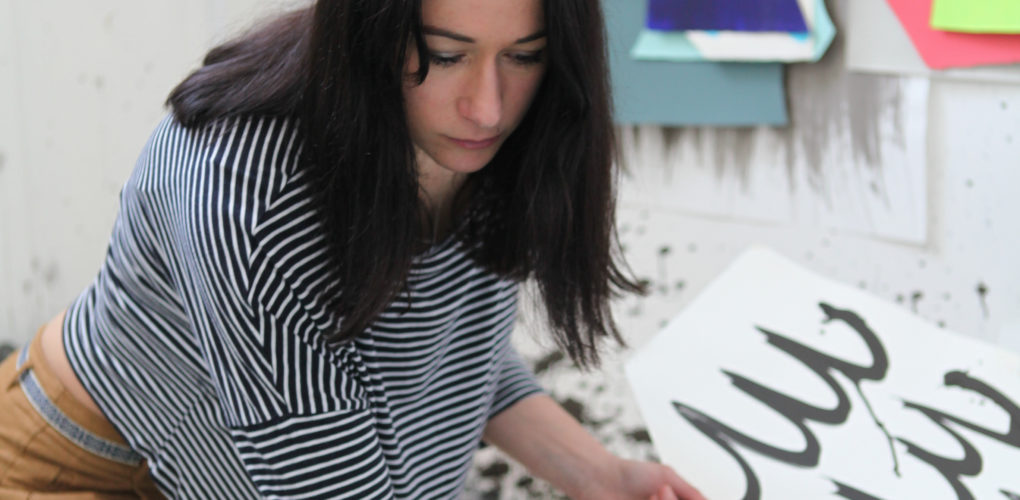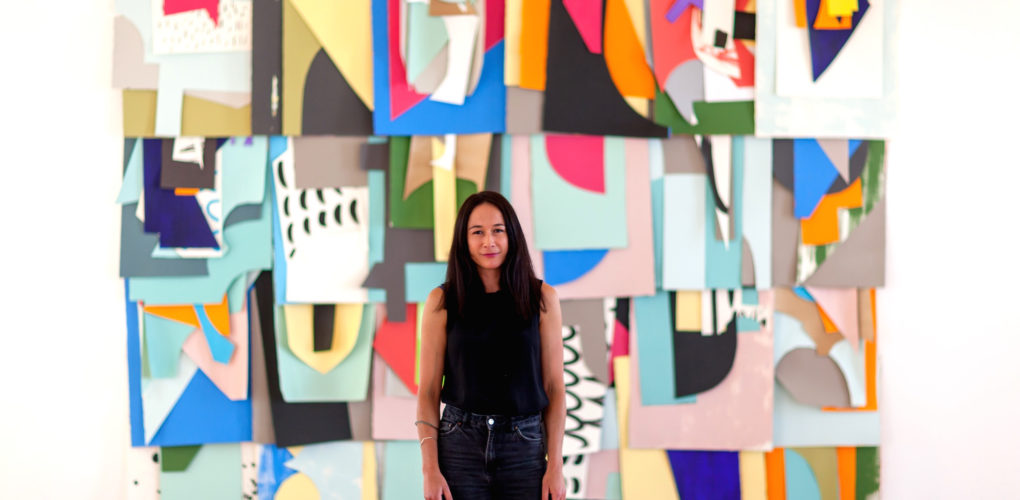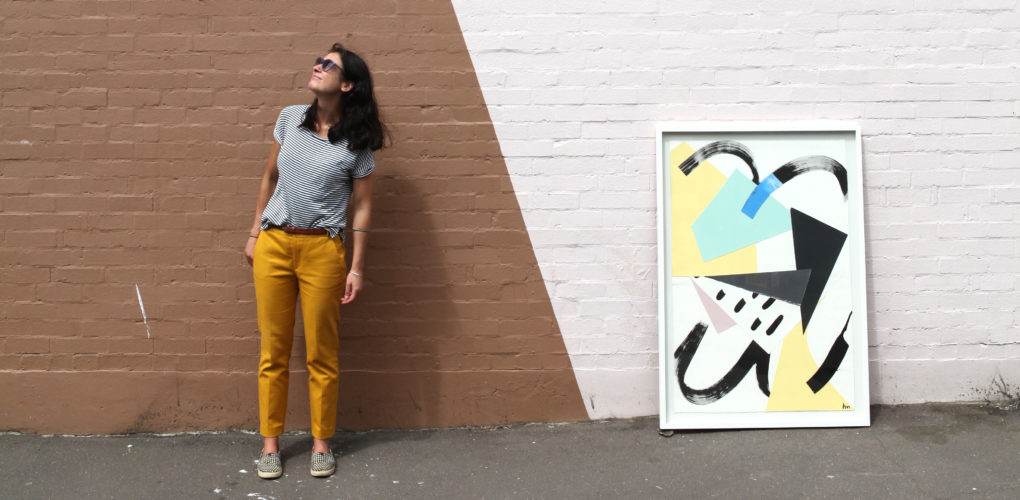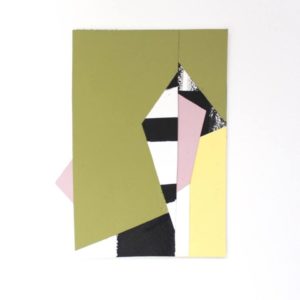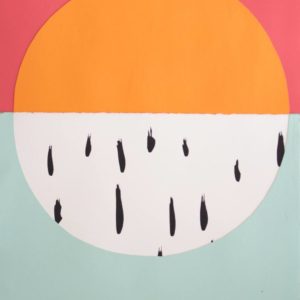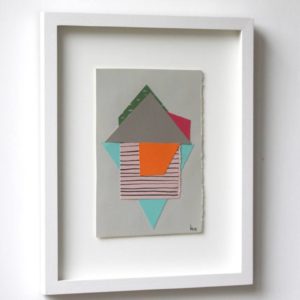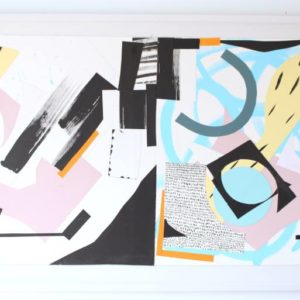One to Watch
 Joanne Hummel-Newell Balances Order and Chaos in her Collages
Joanne Hummel-Newell Balances Order and Chaos in her Collages
Joanne Hummel-Newell creates abstract collages charged with emotion and spontaneity. She is interested in balancing order and chaos, be it by adding a stroke of paint or juxtaposing geometric forms with a softer pastel color palette informed by her surroundings: Victorian buildings and a serene beachfront on the Isle of Wight. She is inspired by the medium of paper itself, both for its physical and nostalgic properties. Paper is familiar to us all, as it is used for everything from birthday cards to reading material. Joanne transforms this everyday object by playing with color, form, and layers to create a more dynamic composition.
Joanne has an MA from the Royal College of Art, London and a BA from Kingston University in Surrey. She is the recipient of the Royal Watercolour Society Open Exhibition Prize and the Quay Arts Purchase Prize and was shortlisted for the Shoosmiths Art Prize and Jerwood Drawing Prize. She was selected by artist Andrew Salgado for inclusion in Fresh Paint Magazine and has also been featured in the UK Times, Observer Newspaper, and After Nyne Magazine. Joanne has participated in solo and group exhibitions across the UK, Italy, and Estonia. She exhibits regularly at The Other Art Fair presented by Saatchi Art and will be Artist in Residence at the London fair in October.
What are the major themes you pursue in your work?
The major continual theme in my work is the balance between order and chaos. It’s present in everything I create. I have to feel a tension present between accident and control. Running parallel to this is my fascination with paper. I use paper because it’s an emotionally charged everyday material familiar to everyone. It’s a wrapped present, a ticket to a gig, a train pass—memories are withheld within paper, this is why I started scrapbooking, collecting, and eventually applying it to my practice until I worked solely in collage. My surroundings also inform the work. I live in a coastal town on an island in the south coast of England and I’m surrounded by pastel-colored Victorian buildings and faded beach paraphernalia. I often select colors based on this palette.
How did you first get interested in your medium, and what draws you to it specifically?
I work largely in paper collage and painting. I am drawn to paper as a material as it is so familiar and used on a daily basis by many. Paper is charged with emotion with objects such as birthday cards, newspapers, letters from loved ones, wrapping paper, or bedroom wallpaper. I used to collage all these things into my work, and over time it was reduced to using mainly watercolor paper made at St Cuthberts Mill in England. The throwaway nature of paper allows me to work spontaneously without worrying about waste. This suits me, as I’m always striving to balance an element of accident and control within the work.
How has your style and practice changed over the years?
My practice has become more fluent and more reductive. I’ve always been an abstract image maker with a leaning towards minimalism. As well as 2D work, I experiment with installation, sculpture, and moving image. I’m continuously exploring the same language in as many ways as possible.
Can you walk us through your process? Do you begin with a sketch, or do you just jump in? How long do you spend on one work? How do you know when it is finished?
I prepare my paper by applying paint to both sides of watercolor paper. This allows me flip the surface to reveal an alternative color, while working quickly and thoroughly. The need for this sort of efficiency harks back to my animation days working on a computer. Then, I create the compositions spontaneously on 6-8 pieces at once. I adjust, tweak, destroy, cut into, and remove compositions over a period of 6 – 8 weeks. I usually finish a series together rather than one at a time and I will probably select only 5 successful pieces out of ten.
What was the best advice given to you as an artist?
The best advice given to me was from a tutor at university, and he told us that it was the best advice given to him. He said that your work should always be honest. If you don’t feel like you’re being honest then stop. If you do, then carry on.
Who are your favorite writers?
I’m drawn toward writers who aren’t scared to tell the truth and expose the raw and sometimes uncomfortable side of existence. I’m currently reading a novel by Elizabeth Strout. She has a way of sharing the complexities of ordinary life which makes you feel like you’ve finally found a friend who knows. I’m also a big fan of Anais Nin. Her words are a constant compass to navigate the journey towards the unknown, the unconventional, and less explored areas of work and life.
